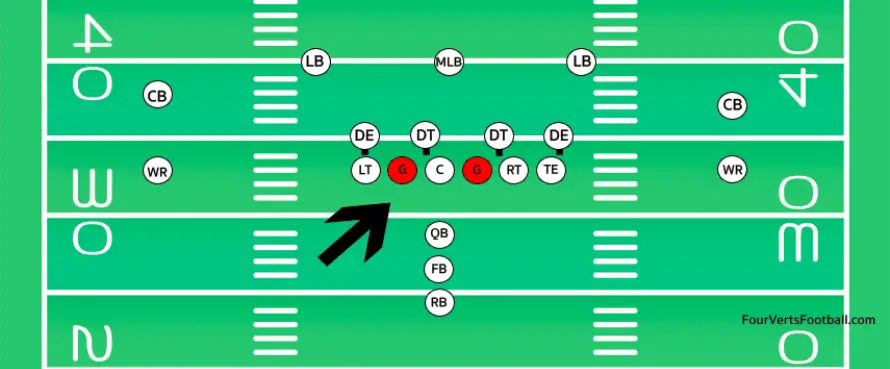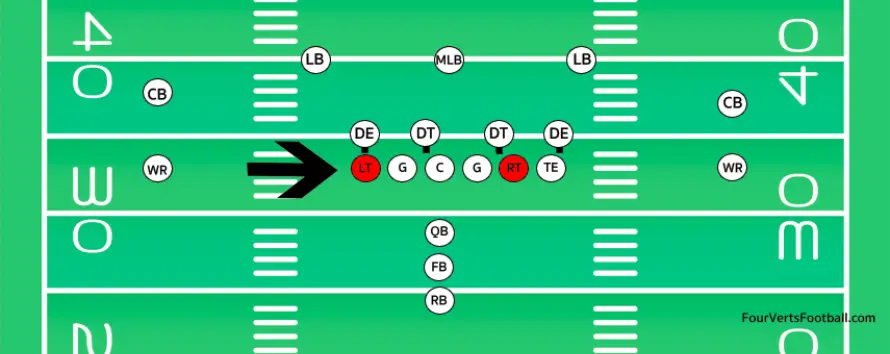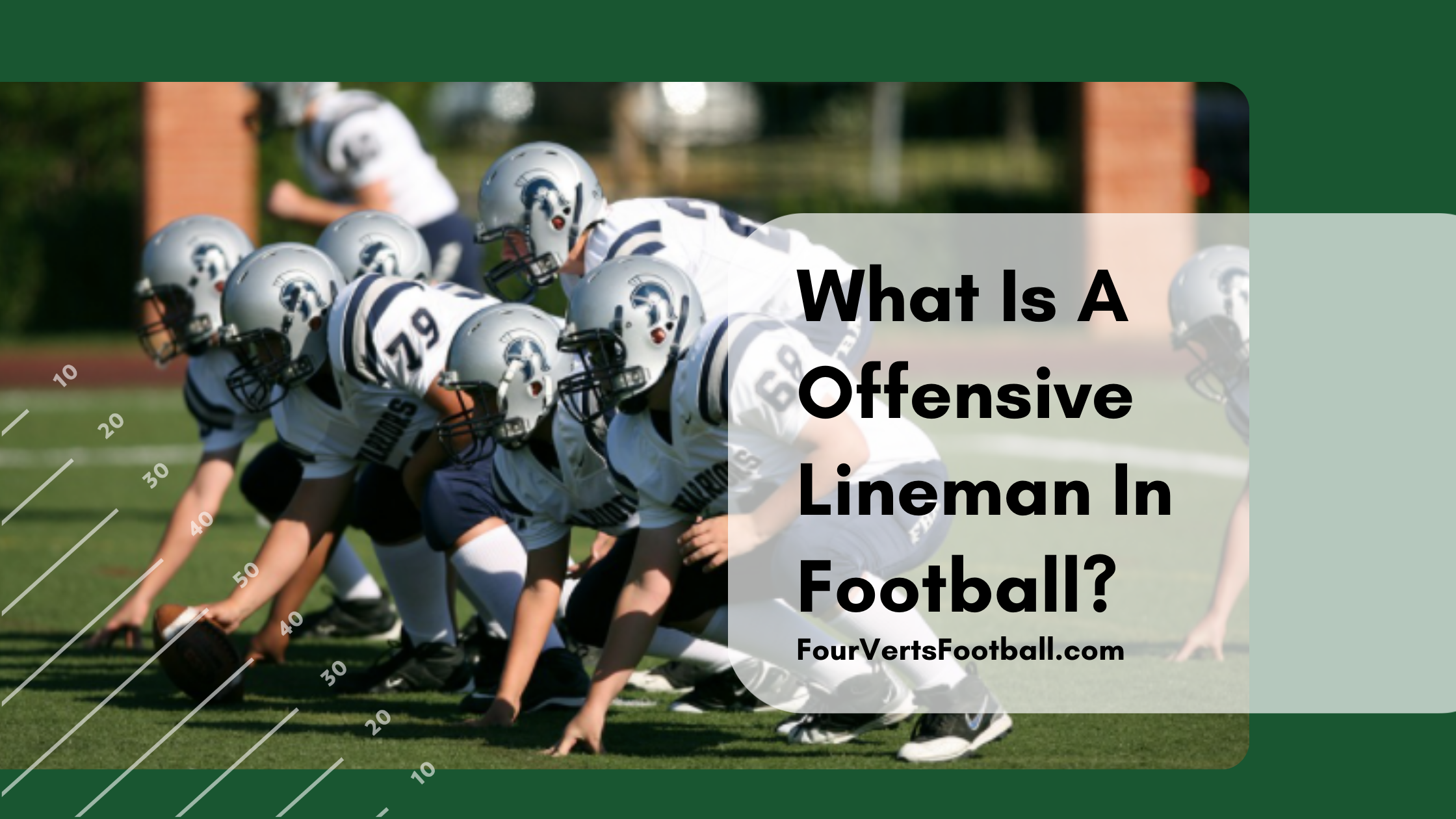Offensive linemen in football are players that protect the quarterback on passing plays and make room for the running back on rushing plays. The offensive line consists of five linemen that will line up on the line of scrimmage to start the play.
Offensive linemen are typically going to face off against the opposing team’s defensive line. The defensive line will attempt to get into the backfield and tackle the quarterback on passing plays.
On rushing plays, the offensive line is going to block defensive players in order to create space for the running back. Before the ball is snapped the offense will decide where the running back is going to run with the ball.
The offensive line will then clear a path for the ball carrier so he can advance as far as possible down the field.
On passing plays the offensive line is responsible for protecting the quarterback. The quarterback will usually need a few seconds before he can pass the ball downfield.
In this time the offensive line will make a semi-circle around the quarterback referred to as the pocket.
The offensive line will then make sure no enters the pocket until the quarterback throws the ball.
Within the offensive line, there are five players at three different positions one center, two guards, and two tackles.
Center

The center is the player that lines up in the middle of the offensive line. This player snaps the ball between his legs to start each play.
When the ball is snapped this player will usually block the defensive tackle on passing downs. Defensive tackles are incredibly strong which is why the center will often get help from a guard when blocking them.
On rushing plays the center will block a defensive tackle away from where the ball carrier is heading.
Guard

On the offensive line, there is going to be a left guard and a right guard. The guards will line up on either end of the center meaning they are both in the interior of the line.
On passing plays the guards will primarily block defensive tackles as well. Guards may also be responsible for picking up blitzing linebackers depending on their assignment.
When it comes to rushing plays guards play a larger role. They will often block defensive tackles to start the play, but on some occasions will travel downfield to block as well.
A pulling guard refers to a guard that leaves his position on the offensive line and runs downfield as a lead blocker for the offensive line.
Guards tend to be more involved in the running game than they are in the passing game.
Tackle

Offensive tackle is the highest-paid position on the offensive line. There are two tackles on the offensive line lining up on either end of the line.
Tackles have a difficult job because they have to take on pass rushers in open space. Since tackles are at the end of the line the defenders are going to have a lot more space to work with.
Offensive tackles are typically larger than offensive guards as this allows them to keep outside rushers at bay.
Additionally, the defense will place their best pass rushers at the ends of the offensive line. This leaves the responsibility of stopping the opponents top pass rusher in space to the offensive tackles.
On rushing plays, the tackles will often seal the end of the line making sure no defender gets inside him. This is a relatively easy task for an offensive tackle which is why they are valued more so for their ability to protect the passer.
Who Is Bigger Offensive Or Defensive Lineman
Offensive and defensive linemen are some of the biggest players on the football field. Which leaves many people wondering which of these two position groups is bigger?
When it comes to height offensive tackles are the tallest position. Height is a huge factor at the tackle position because it allows them to have a large reach. The long arms and height allow tackles to keep their opponents at bay.
Defensive tackles are fairly tall on average but do not require much height to excel at their position.
In terms of weight, the heaviest players on the football field are defensive tackles. Having weight at the defensive tackle position is incredibly important because these players cannot allow the offensive line to push them around.
This is why you will often see defensive tackles with beer bellies playing at the highest levels of football.

